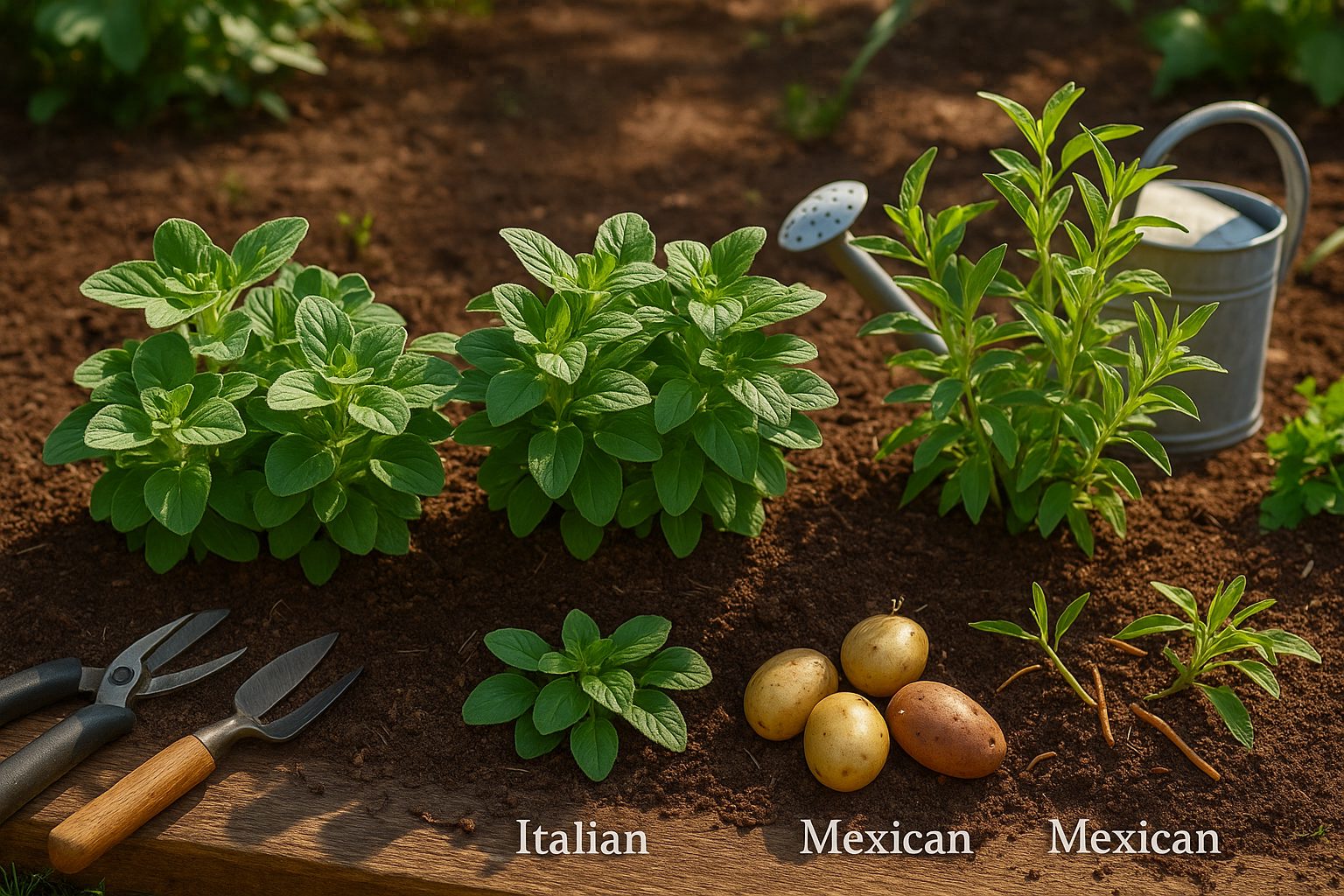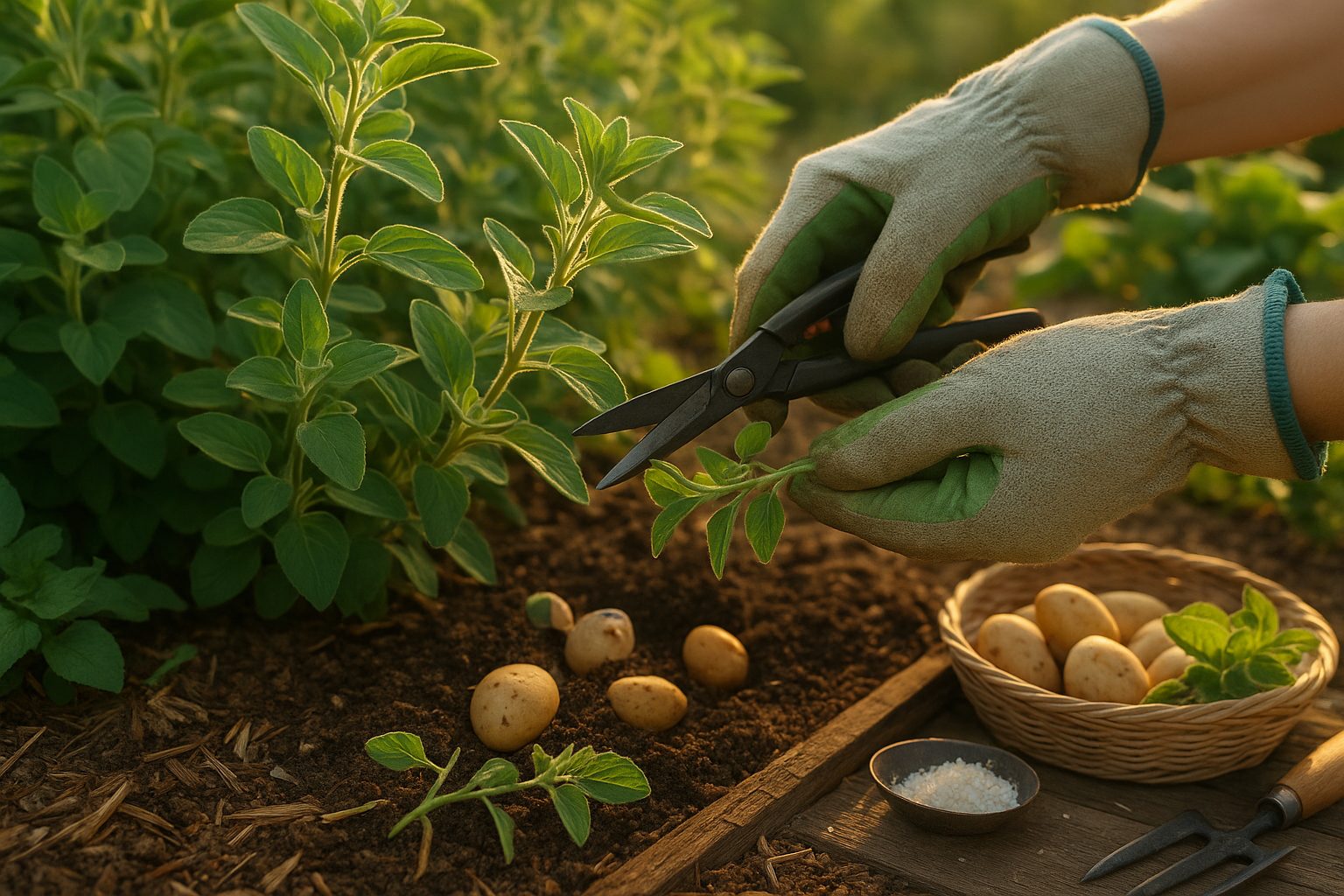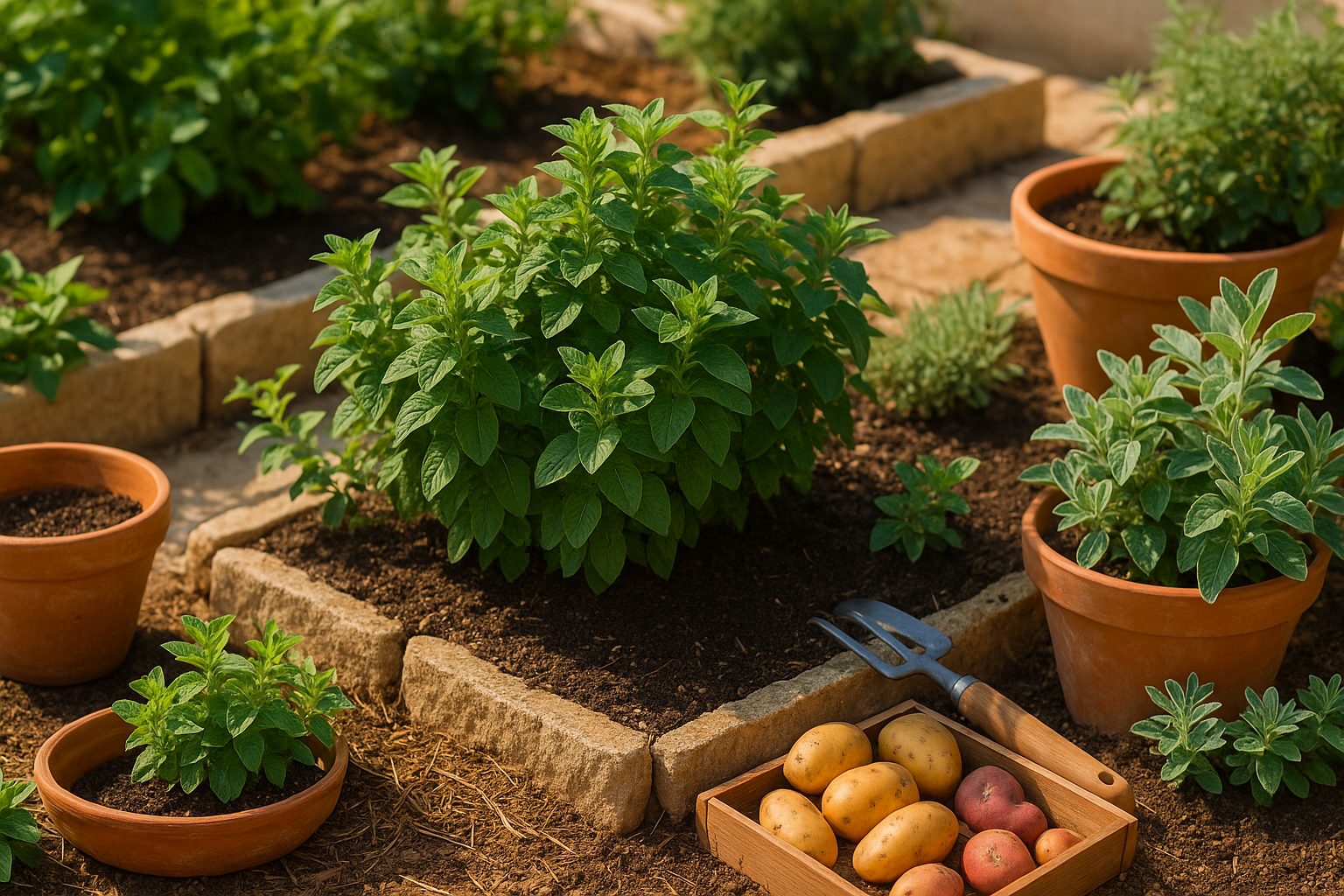Understanding Oregano Varieties for Hot Climates

If you’ve ever wondered about the resilience of Mexican oregano in heat, you’re not alone—especially if you garden where summers sizzle. Among oregano varieties, the most common are Greek oregano (Origanum vulgare), Italian oregano (a hybrid), and Mexican oregano (Lippia graveolens).
While Greek and Italian oregano thrive in cooler Mediterranean climates and deliver that classic earthy, slightly bitter flavor we recognize in pizza and pasta, they often wilt under relentless heat and sun. Mexican oregano, on the other hand, isn’t a true oregano but belongs to the verbena family. This distinction makes all the difference when it comes to surviving—and thriving—in hot climates.
Mexican oregano’s robust, citrusy, almost peppery flavor shines beautifully in spicy dishes and salsas. Its shrubby growth habit, drought tolerance, and love of full sun make it ideal for gardening in desert and tropical regions.
If you’re looking to plant oregano and face hot, dry summers, always check the variety on plant tags or seed packets—Lippia graveolens or “Mexican oregano” is your reliable pick for heat. To get the healthiest results:
- Choose a well-draining location.
- Water your plants at the base, allowing the soil to dry slightly between waterings.
- Use mulch to help conserve moisture.
- Snip stems regularly to encourage bushier growth.
In summary, understanding these differences will help you select the right oregano for your garden, ensuring flavorful harvests even when temperatures soar.
Ideal Sunlight and Temperature Needs
Oregano thrives best in full sun, soaking up at least six hours of direct sunlight each day. This encourages robust growth and boosts the oil content that gives oregano its signature flavor. While it can tolerate partial shade—especially in very hot climates—too much shade will result in leggy plants and a milder, less aromatic taste.
If your oregano shows signs of sun stress, such as wilting, crispy brown leaf edges, or pale, washed-out leaves, it may be getting too much intense midday sun. In these cases, try providing some afternoon shade with a lightweight garden cloth, placing potted oregano where it receives morning light but is shielded later in the day, or mulching around the base to help retain moisture. During blistering heatwaves, watering early in the morning can also help the plant endure high temperatures.
As a rule of thumb, observe your plant: healthy oregano exposed to optimal light will display compact growth, vibrant green leaves, and a strong aroma. If growing indoors, place oregano near a sunny window or supplement with a grow light to mimic outdoor conditions. With just a little planning, you can ensure your oregano enjoys the right balance of sun and warmth for flavorful, lush harvests all season long.
Soil, Water, and Drainage Essentials
Getting soil, water, and drainage just right is crucial for gardening success, especially in hot climates. Most plants thrive in well-draining soils that are slightly alkaline to neutral (pH 6.5–7.5), which helps roots access nutrients and prevents issues like root rot. Heavy clay or compacted soils tend to hold too much moisture and become waterlogged, especially after rain or frequent watering.
To test your soil’s drainage, dig a small hole, fill it with water, and see if it drains within a few hours—if not, drainage needs improvement. In hot, dry areas, it’s tempting to water often, but it’s better to water deeply and less frequently (about twice a week) to encourage roots to grow downward, making plants more resilient to heat. Always let the top inch or two of soil dry out between waterings to avoid soggy conditions that invite disease.
For better soil structure and drainage, mix in coarse sand, perlite, or small gravel to loosen dense soils. Adding organic matter like compost or well-rotted manure not only improves drainage but also retains enough moisture and keeps plants fed—a win-win.
Mulching around plants with bark, straw, or shredded leaves is another simple way to protect roots from extreme heat and reduce water evaporation. These practical steps can transform tough patches of garden into healthy, heat-hardy spaces where plants can thrive even during the hottest days.
Planting Location, Microclimates, and Companion Planting
Choosing the right location for your oregano can make a big difference in its growth and flavor. Aim to plant oregano in a spot that gets at least six hours of sunlight each day—think about areas along a sunny wall, in raised beds, or even containers that can be moved to capture more light. Keep it away from large trees or tall plants that may cast too much shade.
Take advantage of microclimates in your garden, especially if you live in a hot region; planting oregano near heat-reflecting walls or patios can help it thrive without overheating. You might also use larger plants to offer light afternoon shade, preventing leaf scorch during the hottest months.
Companion planting is another smart strategy—oregano grows well alongside vegetables like tomatoes, peppers, and beans, offering pest protection thanks to its aromatic oils. It can even deter pests from more vulnerable neighbors, and when grown near basil or cabbage, oregano may enhance both plants’ resilience.
For containers, use well-draining soil and place them in spots that receive filtered sunlight during peak heat. With thoughtful placement and smart companions, your oregano will be healthier, hardier, and more productive.
Pruning, Harvesting, and Maintaining Oregano in Heat

Pruning oregano during hot weather is essential to keep the plants healthy and encourage fuller, bushier growth. Aim to prune early in the morning or late in the afternoon when temperatures are cooler. Trim back about one-third of the plant using clean, sharp scissors, focusing on cutting just above a pair of leaf nodes. This not only shapes the plant but also improves air circulation, making it less attractive to pests and diseases.
When harvesting oregano in the summer, follow this step-by-step approach:
- Pick leaves or stems before flowering for the best flavor.
- Always leave at least half the plant intact so it can recover.
- Avoid harvesting during the hottest part of the day to prevent stress or wilting.
For long-term maintenance in hot climates, add a two-inch layer of mulch around the base to retain moisture and keep the roots cool. Check regularly for pests like spider mites, which thrive in dry, warm conditions. If you spot any, remove them by hand or rinse the plants with a gentle stream of water.
By staying on top of these simple care routines, you’ll keep your oregano thriving all summer long.
Storing, Using, and Preserving Oregano from Hot-Climate Gardens
After harvesting oregano from a hot-climate garden, you’ll notice its leaves have a bold, concentrated flavor—a direct result of sun-soaked growing conditions. To capture that intensity, start by air-drying small bundles in a cool, well-ventilated area out of direct light, or use a dehydrator set to low heat.
Once fully dry, remove the leaves from the stems, crumble them gently, and store in airtight glass jars away from moisture and sunlight to prevent loss of essential oils.
Homegrown oregano shines in dishes where its vibrant taste can stand out—sprinkle it over grilled meats, mix into homemade tomato sauce, or add to marinated olives for a Mediterranean kick.
For a longer shelf life, freeze whole leaves in zip-top bags, or chop and freeze them in olive oil using ice cube trays for easy portioning.
Oil infusions are another great preservation method: steep clean, dry oregano sprigs in a bottle of high-quality olive oil for two weeks, then strain. This infused oil makes a flavorful drizzle for salads or bread.
By using these techniques, you can savor homegrown oregano’s warm-climate intensity all year long.
Troubleshooting Common Heat-Related Problems
Oregano can struggle when temperatures soar, with sunburn, wilting, and pest outbreaks among the most common heat-related problems.
Leaves with brown, crispy edges or pale spots are usually signs of sunburn, especially if plants receive harsh midday sun. To prevent this, use lightweight shade cloths during peak heat or move potted oregano to a spot with morning sun and afternoon shade.
Wilting happens quickly in high temperatures, but be careful not to overwater. Check the soil two inches down; water early in the morning if it feels dry, and mulch around the base to help retain moisture.
Pests like spider mites often attack stressed, overheated oregano, leaving tiny webbing and damaged leaves behind. Spray with a gentle solution of water and neem oil or introduce beneficial insects such as ladybugs to keep populations in check.
During heatwaves, it’s a good idea to temporarily relocate containers to a cooler, sheltered area or use garden umbrellas.
After any sign of heat stress, trim back damaged leaves so healthy growth can rebound. By monitoring the weather and responding quickly, you can keep your oregano thriving even in the hottest months.
